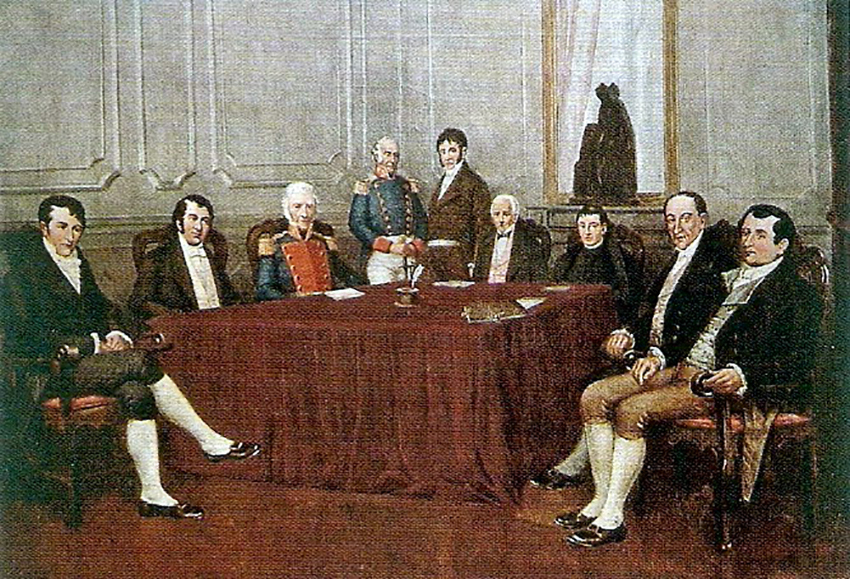The May Revolution of May 18-25, 1810 launched the Argentine War of Independence. It was the first successful revolution in the Spanish American Wars of Independence.
The May Revolution launched the Argentine War of Independence. which led to the Latin American Wars of Independence.
It took 90 years to break Spanish control of the Americas. It all ended with the Spanish-American War of 1898 which put Americans in control of Cuba, Puerto Rico and the Philippines.
Roots of the May Revolution
The ideas that led to the American Revolution (1775-1783), French Revolution (1789-1799) and Haitian Revolution (1791-1804) set the stage for the independence of Latin America.
The struggle began when King Ferdinand VII of Spain abdicated to Napoleon’s French forces at the start of the Peninsular War (1808-1814).
A Supreme Central Junta led a Spanish resistance, but was defeated by February of 1810.
May Week (Semana de Mayo)
The May Revolution started with the arrival of a British ship in Buenos Aires on May 14, 1810 with newspapers that reported the fall of the Supreme Central Junta in Spain. The news spread quickly.
The Spanish governor Viceroy Baltasar Hidalgo de Cisneros suggested that leaders should create a government that would rule on behalf of the deposed Spanish king.
A open Cabildo, an emergency meeting of heads of households, was held on Tuesday, May 22.
The meeting continued through Wednesday, May 23 when the attendees voted to dismiss the Spanish Viceroy. Notices were posted throughout Buenos Aires.
On Thursday, May 24, a ruling junta was appointed with the former viceroy as its leader. This angered the community.
On Friday, May 25, a large demonstration forced the Cabildo to back down and a governing body, the Primera Junta, was appointed.
The members of the Primera Junta were President Cornelio Saavedra, Manuel Belgrano, Juan José Castelli, Miguel de Azcuénaga, Juan Larrea, Domingo Matheu, Manuel Alberti, and secretaries Juan José Paso and Mariano Moreno.
The May Revolution of 1810 was just the beginning of a long struggle. The Viceroyalty of the Río de la Plata included roughly the territories of present-day Argentina, Bolivia, Paraguay, Uruguay, and parts of Brazil. Independence had to be fought for.
Manuel Belgrano, Juan José Castelli, and José de San Martin led the Argentine War of Independence. There is a statute of José de San Martin in Central Park at 59th Street and Sixth Avenue.
Argentina declared its independence from Spain at an assembly in Tucumán on July 9, 1816.
The Argentine War of Independence ended in with the Battle of Maipú (near Santiago, Chile) in 1818.
The Spanish American Wars of Independence continued until the Battle of Ayacucho in Peru 1825.
Things remain unsettled. Finally the Americans took Cuba, Puerto Rico and the Philippines in the Spanish-American War of 1898. That was the end of Spanish colonial power, and the beginning of America’s international rise.

